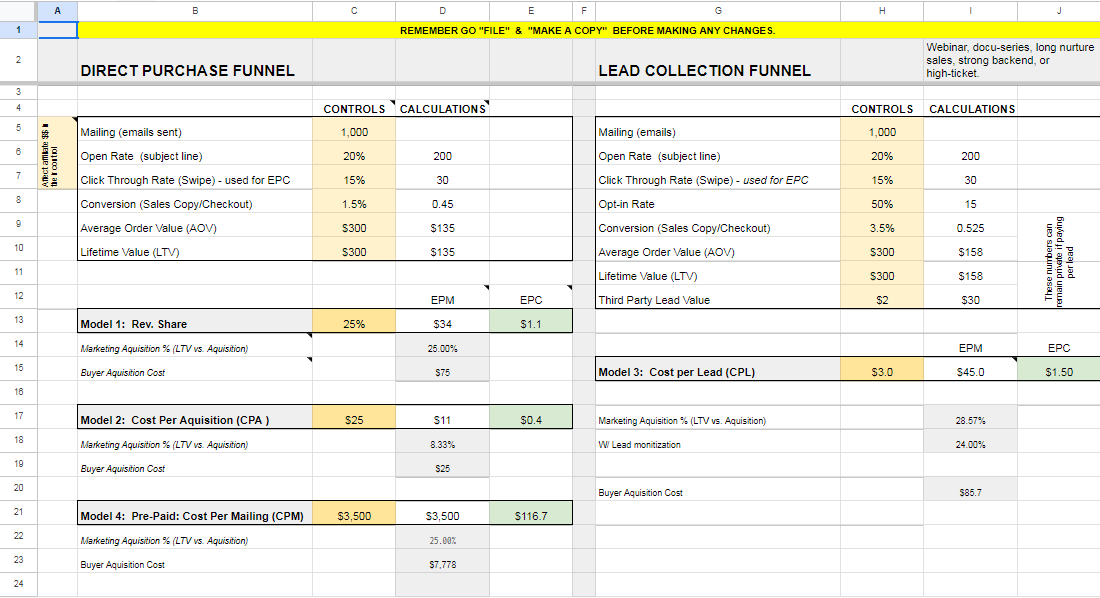Affiliate Marketing • 28 min read

Knowing what to pay your affiliates is essential to the success of your program. Although there are common ways to approach affiliate compensation, we recommend using this comprehensive guide to help you find the compensation structure best suited to your needs.
Choosing a Compensation Structure
The most common way of thinking about commission structure is to either find the lowest amount you can pay or simply choose an arbitrary number. However, what you need to understand is that compensation structure is all about scalability. You need to switch your mindset and consider:
- What is the MOST I can pay?
- How can I make it appeal to more partners?
- What works with my offer model, company objectives, and makes it scalable?
Most people invest a chunk of their money into cold traffic sales instead of affiliates. However, affiliates bring warm traffic while acting as your personal PR team. Therefore, the commission should almost be comparable to what you are willing to pay for cold traffic. You want to make it as incentivizing as possible, so you can scale up quickly to increase its impact.
How you make it appealing will depend on what kind of funnel, store, or partners you have. This is never a one size fits all situation, and instead is specific to your company. The goal is to make sure everyone is happy on both sides, so you need to design your commission structure to attract and retain partners with ample rewards.
Here is an in-depth analysis of the most common compensation structures to help you choose the one that suits your business best.
Cost per Acquisition (CPA)
CPA focuses on a partner that is paid a flat rate per sale made from their referral. This model can work for most funnels and is easy for affiliates to calculate their projected earnings.
| Pros
|
Cons
|
|
|
Cost per lead (CPL)
If you have a lead collection funnel, this is the option to consider, especially if you use Webinars, docuseries, information products leading to high tickets, and long nurture sequences. A lot of affiliates/influencers will not allow you to collect leads first. They will try to make the sale, but only pay on sales. Unless the leads are cookied for an extended period (3-12 months) you will be giving credit for anything sold, and not promoting many third-party offers. But most affiliates will remove all non-buyers.
| Pros
|
Cons
|
|
|
Revenue share percentage (RevShare)
This was the original standard for affiliate programs, and there are a lot of programs that are still running as revenue share. However, more people within the industry are moving away from this model mainly because it is the highest risk for affiliates with the hardest compensation plan to get mailings until it’s fully proven. However, although it is the lowest financial risk for offer/product owners, it also has the lowest level of control over creative messaging. It can also be front-end only or a different percentage of the upsells.
| Pros
|
Cons
|
|
|
Pre-pay (you pay a flat amount) for an email mailing, mention, social post, etc.
This option is ideal for brand builders and anyone that has a strong funnel, wants to get through testing, or has full control over creativity. You can think of it like paying for ads, but they come in warmed up. It is also the most scalable, consistent, and predictable method because it has the highest level of control for brands.
| Pros
|
Cons
|
|
|
Variables
There are two kinds of affiliates that will work for you: alignment and mission-focused affiliates and revenue-focused affiliates. Both have their own positives and negatives, so you must choose the affiliate that will provide the most amount of support and success.
Alignment and mission-focused affiliates would be brands and influencers who promote your product because they believe in the message your brand advertises. They are not revenue driven. However, earnings can be less relevant but harder to scale and get recurring traffic.
Revenue-focused affiliates typically have a large following and email list from 10,000 to 10 million leads and buyers. There are a lot of companies that rely on generating third-party revenue as part of their model. If your offer numbers work for influencers who rely on third-party promotions, it’s easy to scale the affiliate program.
It is not just the affiliate variables that matter, but the cost of the kind of affiliate that you choose to hire. Their following and email lists will impact the number of clicks, and the method they use to receive clicks. Let’s look at important variables for revenue share percentages, CPAs, and CPLs using the following table to help provide an easy comparison of the three structures.
| Revenue Share Percentage
|
CPA
|
CPL
|
= $1- $4 click paid to the affiliate |
= $1- $4 click paid to the affiliate. |
= $2- $10 lead (this is the average): Every industry has a standard expected earning benchmark. |
Pre-paid does not fall under the same variables as the other three structures. Instead it has its own considerations:
- Value considerations including age of list, buyers or leads, average buyer value, social engagement, how many promotions are done per week, etc.
- Standard earning expectations apply to the audience.
- Remember all is negotiable if buying bulk or recurring then the price should drop significantly. For example, if $1.50- $2 per click estimates is used to gauge initial value, $1 might be okay if you commit to recurring, and could get under that if committing to bulk recurring purchases.
- Many affiliate programs rely on third-party revenue. Keep that in mind: if you can lower the risk for them, they will often be willing to negotiate a significant break.
Pre-Paid online average rates are very similar to that of the other three compensation structures:
- $1- $4 per click is standard earnings for traditional email marketers (depending on the industry)
- $100- $10,000 is average range for social post
- $200- $50,000 per podcast and affiliate link plus ad spend is recommended. This depends on downloads, engagement, and endorsement.
Compare where your affiliate program stands on payouts with the industry standards.
Raw Math Commission Spreadsheet
After looking at these compensation structures, you will need to see how each functions in practice. In our raw math commission spreadsheet lesson inside the Traffic Tribe Affiliate Mastermind Community, we go into every structure in-depth to explain how the spreadsheet shows your numbers and how to calculate them. We also provide you with different model templates and how they help you leverage this valuable tool.

Need Support Creating And Scaling Your Affiliate Program?
Supercharge Your Affiliate Revenue with everything you need to know to grow your partnership marketing channel in a free mini-course Everflow of Partner Connections.
You’ll get 15 lessons and 7 actionable tools designed to meet you at any level (beginner, intermediate and advanced) and help you build a steady affiliate revenue coming month after month, year after year!

Sources
https://east5thavenue.vipmembervault.com/products/units/view/221/?lesson=1205
https://east5thavenue.vipmembervault.com/products/units/view/221/?lesson=1207

